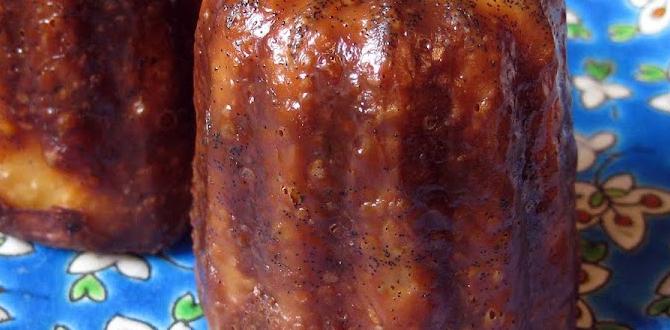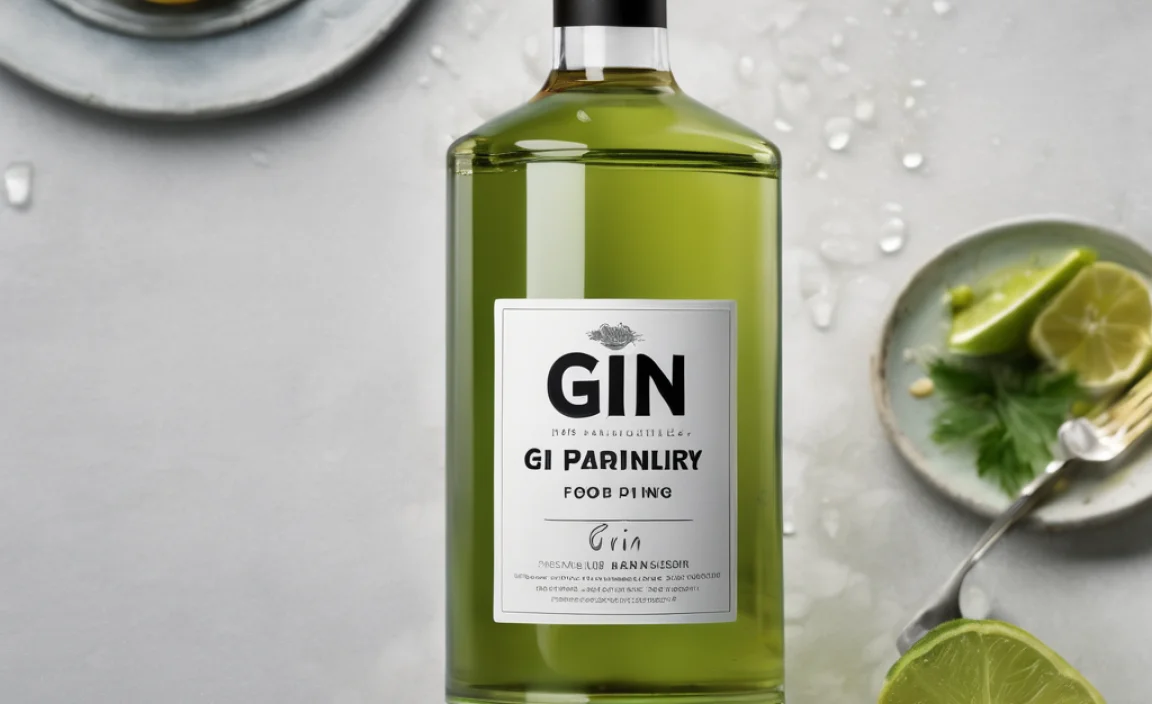Houseboat cooking in Kerala is all about embracing fresh, local ingredients and simple techniques to create delicious meals while afloat on the serene backwaters. This guide breaks down everything you need to know, from essential kitchen tools to crafting authentic Kerala dishes, making your houseboat culinary experience unforgettable and stress-free.
Dreaming of cruising Kerala’s tranquil backwaters? Imagine waking up to the gentle lapping of waves, the scent of spices in the air, and a delicious, home-cooked meal made right on your houseboat! It sounds idyllic, but if you’ve never cooked in such a unique setting, you might be wondering where to begin. Don’t worry! Houseboat cooking in Kerala is surprisingly accessible and incredibly rewarding. We’ll show you how to make the most of this charming culinary adventure, turning fresh, local ingredients into mouthwatering meals without missing a beat.
This guide is your cheerful companion to unlocking the secrets of houseboat cuisine in Kerala. From understanding the basics of preparing food in a compact kitchen to whipping up authentic regional specialties, we’ve got you covered. Get ready to embark on a flavorful journey that’s as smooth as the backwaters themselves! Let’s dive in!
FAQ: Your Houseboat Cooking Questions Answered
Q1: What are the must-have kitchen essentials for houseboat cooking?
A: Focus on compact, multi-functional items: a good knife, cutting board, a couple of pots and pans, basic utensils (spatula, ladle), measuring cups, a small spice box, and a cooler for perishables. Think efficiency and space-saving!
Q2: How can I ensure food safety on a houseboat?
A: Keep raw and cooked foods separate. Wash hands and surfaces frequently. Use a cooler with ice packs to keep ingredients like fish and dairy cold. Cook foods thoroughly, especially meats and fish.
Q3: What are some easy Kerala dishes perfect for a houseboat?
A: Simple curries like fish molee, vegetable thoran (stir-fried vegetables), and egg roast are fantastic. Puttu (steamed rice cakes) for breakfast and lemon rice are also great, low-fuss options.
Q4: Can I buy fresh ingredients locally while on the houseboat?
A: Absolutely! Most houseboat packages allow you to stop at local markets or villages. This is the best way to get incredibly fresh fish, vegetables, and spices. Just ask your boat crew!
Q5: What if I have dietary restrictions or allergies?
A: Communicate your needs clearly with the houseboat operator before your trip. They are usually very accommodating and can tailor meals to vegetarian, vegan, gluten-free, or allergy requirements.
Q6: How do I manage limited cooking space?
A: Prioritize one-pot meals or dishes that can be prepared in stages. Pre-chopping vegetables or marinating meats before you start cooking can save time and space on board.
Q7: What kind of spices are essential for Kerala cooking?
A: Key spices include turmeric, chili powder, mustard seeds, curry leaves, ginger, garlic, cumin, and coriander. A basic Kerala spice box will have most of these.
Everything You Need to Know About Houseboat Cooking in Kerala
Embarking on a houseboat journey through Kerala’s mesmerizing backwaters is a dream for many. While the stunning views and serene atmosphere are primary attractions, the culinary experience can elevate your trip from wonderful to unforgettable. Houseboat cooking in Kerala offers a unique opportunity to savor authentic flavors in the most picturesque setting imaginable. But what does it really involve? This guide will walk you through all the essentials, ensuring your time on the water is filled with delicious, hassle-free meals.
From understanding the compact nature of houseboat kitchens to sourcing the freshest local produce, we’ll cover it all. Whether you’re a seasoned cook looking for a new adventure or a beginner eager to try something new, this guide aims to make houseboat cooking in Kerala an enjoyable and delicious part of your vacation.
Why Houseboat Cooking is Special
Cooking on a houseboat isn’t just about preparing food; it’s an experience woven into the fabric of your Kerala backwaters adventure. The intimacy of a small kitchen, combined with the ever-changing, breathtaking scenery outside your window, transforms a daily chore into a delightful ritual. The aroma of spices mingling with the fresh, humid air, the gentle sway of the boat, and the satisfaction of creating a meal with locally sourced ingredients make it truly special.
It’s a chance to connect with the local culture through its food, often using recipes passed down through generations and prepared with ingredients plucked directly from the land and waters you’re gliding through. This immersive culinary journey adds a rich layer to the overall backwater experience, making your trip distinctly Keralan.
The Heart of Kerala: Local Ingredients
Kerala is often called the “Spice Garden of India,” and for good reason! The region is blessed with fertile land and a tropical climate that yields an incredible abundance of fresh produce and aromatic spices. When you’re cooking on a houseboat, the key to authentic and delicious meals lies in embracing these local treasures.
Key Produce to Look For:
- Seafood: Freshly caught fish (like Karimeen – Pearl Spot, prawns, and mackerel) are staples. Talk to your boat crew about sourcing the catch of the day!
- Vegetables: Expect vibrant options like okra, ash gourd (kumbalanga), drumsticks, plantains, jackfruit, yam, and a variety of leafy greens.
- Coconut: Absolutely indispensable! Freshly grated coconut is used in curries, chutneys, and as a garnish. Coconut milk and oil are also fundamental.
- Rice: Kerala is a major rice-producing state. Varieties like Matta rice (rose-colored parboiled rice) are local favorites.
- Fruits: Mangoes, bananas, papayas, and pineapples add sweetness and flavor to meals and desserts.
Essential Spices of Kerala Cuisine:
A well-stocked spice box is the best friend of any Kerala cook. These aromatics form the soul of the region’s dishes:
- Turmeric powder (Manjal podi)
- Red chili powder (Milagai podi)
- Coriander powder (Malli podi)
- Mustard seeds (Kadugu)
- Fenugreek seeds (Uluva)
- Cumin seeds (Jeerakam)
- Black peppercorns (Kurumulaku)
- Curry leaves (Kariveppila)
- Ginger (Inji)
- Garlic (Veluthulli)
- Cardamom, cloves, cinnamon (for garam masala or specific dishes)
Many houseboats come equipped with these staples, but if you’re planning to do significant cooking, it’s worth confirming or bringing a small assortment yourself.
The Houseboat Kitchen: Tools and Setup
Houseboat kitchens are designed for efficiency and compactness. They are typically smaller than a standard home kitchen but are equipped to handle meal preparation for guests. Understanding the space and tools available will help you plan your cooking!
Typical Houseboat Kitchen Appliances & Utensils:
- Gas Stove: Usually a two-burner gas stove.
- Sink: A small sink for washing produce and dishes.
- Counter Space: Limited, so organization is key.
- Storage: Basic cabinets and shelves for ingredients and utensils.
- Cookware: A few pots and pans, often including a pressure cooker.
- Utensils: Spatulas, ladles, knives, cutting board, mixing bowls, serving spoons.
- Tableware: Plates, bowls, glasses, and cutlery.
- Refrigerator: A small fridge to store perishables.
Tips for Cooking in a Compact Space:
- Prep Ahead: If possible, chop vegetables or marinate meats before you get on the boat, or early in the day.
- Clean as You Go: Wash utensils and surfaces immediately after use to keep the limited space clear.
- Multi-Task: Use the stove efficiently. While something is simmering, prepare the next step or chop the next ingredient.
- Keep it Organized: Designate spots for your spices, ingredients, and cleaned utensils.
- Prioritize One-Pot Meals: Dishes that require minimal pots and pans simplify cleanup and cooking.
For those looking at more permanent setups or ideas, resources like the U.S. Fire Administration’s guidance on Kitchen Fire Safety can offer insights into safe cooking practices, which are paramount even in a small space.
Essential Houseboat Cooking Techniques
Kerala cuisine relies on some core techniques that are simple to master and yield incredible flavor. These methods are perfectly suited for the houseboat environment.
Quick & Easy Techniques:
- Tempering (Tadka/Thalikkal): This involves heating oil or ghee and frying spices like mustard seeds, curry leaves, chilies, and sometimes onions until fragrant. It’s a magical step that infuses flavor into many dishes.
- Sautéing/Stir-Frying (Poriyal/Thorans): Quickly cooking vegetables with spices, often finished with grated coconut. This is a hallmark of Kerala side dishes.
- Simmering Curries: Gently cooking ingredients in a liquid base (coconut milk, tamarind water, or tomato-based) until flavors meld and the dish thickens.
- Steaming: Used for dishes like Puttu (steamed rice and coconut cakes) and Idiyappam (rice noodles).
- Marinating: Allowing ingredients (especially fish or meat) to absorb flavor from spices and yogurt/lemon juice before cooking.
Flavor Boosters:
- Fresh Curry Leaves: These aromatic leaves are a game-changer. Sauté them in hot oil at the beginning of cooking or sprinkle fresh ones on top.
- Grated Coconut: Freshly grated coconut adds texture and a rich, nutty flavor to curries, stir-fries, and even rice dishes.
- Ginger-Garlic Paste: A fundamental base for many savory dishes, providing depth of flavor.
- Tamarind Paste: Adds a pleasant sourness to curries, especially fish dishes.
Must-Try Kerala Dishes for Your Houseboat Menu
Planning your meals is part of the fun! Here are some beginner-friendly, delicious Kerala dishes that are perfect for cooking and enjoying on a houseboat.
Breakfast Options:
- Puttu Kadala Curry: Steamed cylinders of ground rice and coconut, served with a spicy black chickpea curry. Relatively simple to make and very filling.
- Appam with Stew: Lacy, thin rice pancakes with a slightly fermented, tangy taste, served with a mild coconut milk-based vegetable or chicken stew.
- Idli/Dosa with Sambar: These popular South Indian staples are often available pre-made or are relatively easy to prepare if you have the batter. Sambar, a lentil and vegetable stew, is a perfect accompaniment.
Lunch & Dinner Dishes:
Main Courses:
- Kerala Fish Curry (Meen Moilee/Meen Curry): A classic! Meen Moilee is a mild, coconut milk-based curry with turmeric, green chilies, and ginger. A spicier Meen Curry uses tamarind and chili powder for a more robust flavor. Easy to make with fresh fish.
- Chicken or Mutton Curry: Simple, well-spiced curries are always a hit. Kerala-style preparations often use coconut milk and a blend of ground spices.
- Vegetable Kuruma: A rich, mildly spiced vegetable curry made with coconut milk and ground nuts, offering a creamy texture.
Side Dishes (Poriyal/Thorans):
- Cabbage Thoran: Finely shredded cabbage stir-fried with mustard seeds, curry leaves, turmeric, mild chilies, and grated coconut. Quick, healthy, and flavorful.
- Beans Thoran: Similar to cabbage thoran, using finely chopped green beans.
- Potato Roast (Urulakkizhangu Varatiyathu): Potatoes stir-fried with spices until slightly crispy.
- Avial: A mixed vegetable dish cooked in a thick yogurt and coconut gravy. While it sounds complex, it’s forgiving and delicious.
Rice & Breads:
- Steamed Rice: Plain rice is the staple accompaniment.
- Lemon Rice: Rice flavored with lemon juice, mustard seeds, curry leaves, and turmeric. A bright and zesty option.
- Chapati/Roti: While not traditionally Keralan, these flatbreads are easy to make if you have some flour and a pan.
Simple Houseboat Cooking Recipes (Step-by-Step)
Let’s get cooking! Here are a couple of incredibly doable recipes perfect for your houseboat adventure.
Recipe 1: Quick Fish Molee (Mild Kerala Fish Curry)
This is a wonderfully delicate and flavorful fish curry, perfect for beginners. It’s light, aromatic, and uses simple ingredients.
Yields: 4 servings | Prep time: 10 mins | Cook time: 20 mins
Ingredients:
- 500g firm white fish fillets (like seer fish, snapper, or pomfret), cut into 2-inch pieces
- 1 large onion, thinly sliced
- 2-3 green chilies, slit lengthwise (adjust to spice preference)
- 1-inch piece of ginger, julienned
- 3-4 cloves garlic, thinly sliced
- 1 sprig of curry leaves
- 1/2 tsp turmeric powder
- 1/4 tsp fenugreek seeds (optional)
- 400ml thick coconut milk (from 1 large coconut)
- 200ml thin coconut milk (or water)
- 1 tbsp coconut oil
- Salt to taste
- 2 tbsp chopped coriander leaves for garnish
Equipment:
- Medium saucepan or pot
- Knife and cutting board
- Measuring cups and spoons
Instructions:
- Sauté Aromatics: Heat coconut oil in the saucepan over medium heat. Add mustard seeds (if using) and let them splutter. Add fenugreek seeds (if using), then add the sliced onions, green chilies, julienned ginger, sliced garlic, and curry leaves. Sauté until the onions are soft and translucent, about 5-7 minutes.
- Add Spices: Stir in the turmeric powder and cook for another minute until fragrant.
- Add Liquids: Pour in the thin coconut milk (or water). Bring to a gentle simmer. Add the fish pieces and salt.
- Cook Fish: Cover and cook on low heat for about 8-10 minutes, or until the fish is just cooked through. Be careful not to overcook the fish as it will break apart. Gently swirl the pot to keep the fish submerged.
- Add Thick Coconut Milk: Pour in the thick coconut milk. Heat gently for another 2-3 minutes – do NOT let it boil, as this can cause the coconut milk to split.
- Serve: Check seasoning and adjust salt if needed. Garnish with fresh coriander leaves. Serve hot with steamed rice.
Recipe 2: Simple Vegetable Thoran (Spiced Vegetable Stir-fry)
Thorans are quick, healthy, and incredibly versatile Keralan stir-fries. This version uses cabbage, but you can adapt it to other finely chopped vegetables like beans, carrots, or even a mix!
Yields: 4 servings | Prep time: 15 mins | Cook time: 15 mins
Ingredients:
- 1/2 medium cabbage, very finely shredded
- 1/2 cup grated fresh coconut
- 1/2 tsp turmeric powder
- 1-2 green chilies, finely chopped (optional)
- 1 tbsp coconut oil
- 1/2 tsp mustard seeds
- 1 sprig curry leaves
- Salt to taste
Equipment:
- Wok or large frying pan
- Knife and cutting board
- Grater (if using fresh coconut)
Instructions:
- Prepare Vegetables: Finely shred the cabbage. If using other vegetables, chop them very finely.
- Temper Spices: Heat coconut oil in the wok or pan over medium heat. Add the mustard seeds and let them splutter. Add the curry leaves and chopped green chilies (if using). Sauté for a few seconds until fragrant.
- Add Cabbage & Spices: Add the shredded cabbage, turmeric powder, and salt. Stir well to combine all ingredients.
- Cook Cabbage




